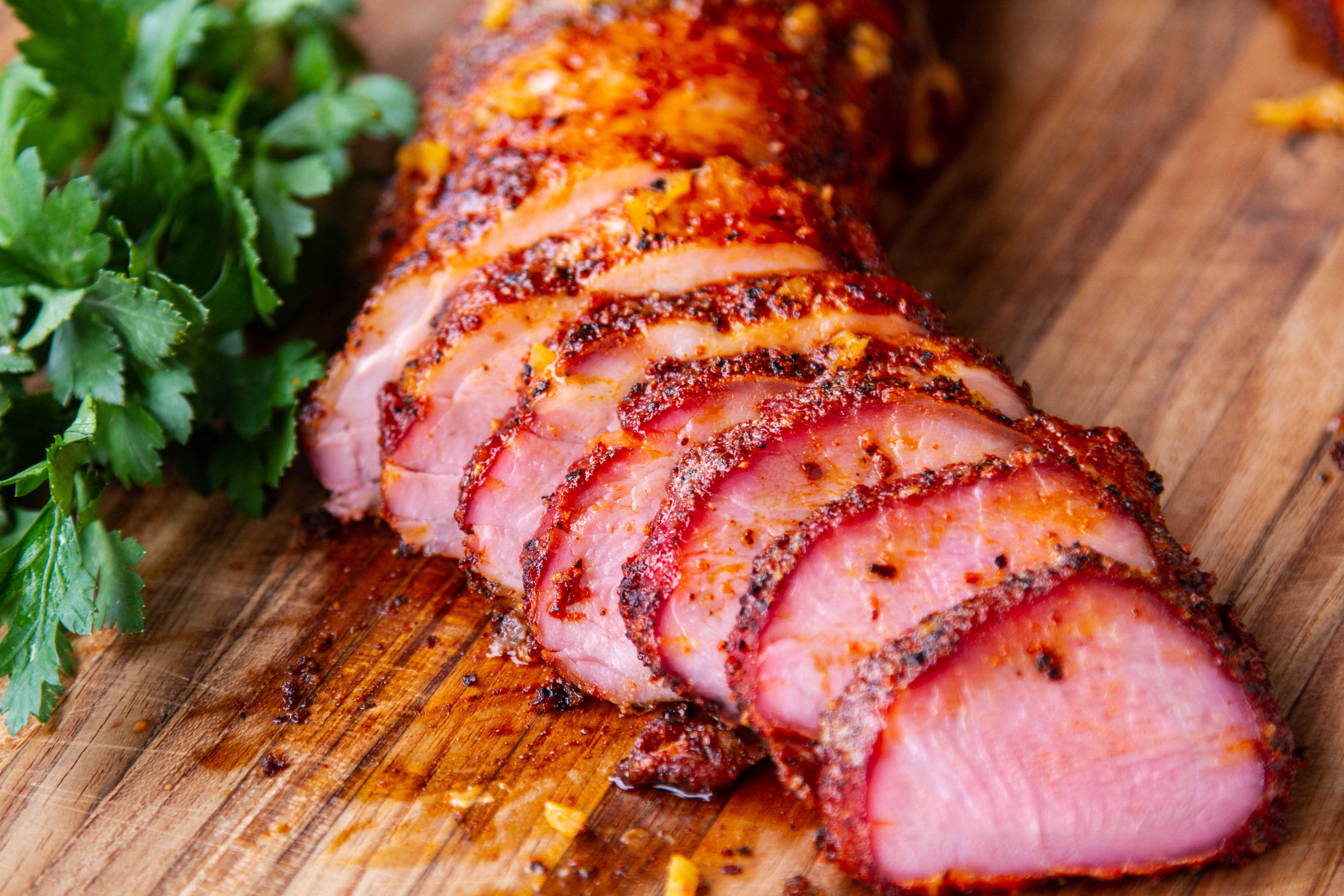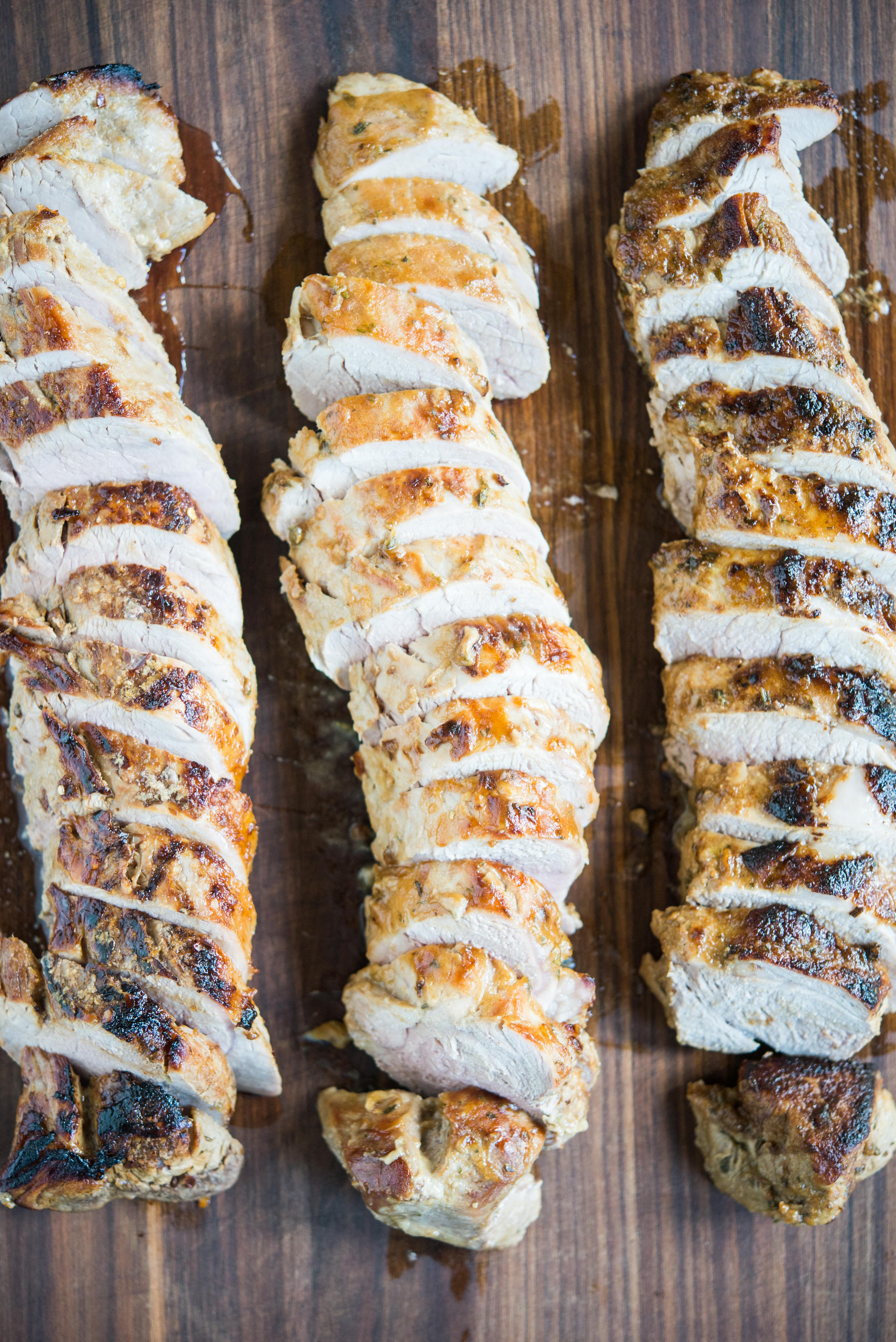Today, we’re going to show you how to cook pork tenderloin in the oven so that it turns out perfectly every time. With this guide, you’ll never have to eat dry, bland pork tenderloin again for dinner!
Pork tenderloin has long been one of my go-to dinners. It’s cheap, easy to make, tastes great, and makes great leftovers. For some reason, it feels fancier than our usual food, which makes it great for a dinner party or a family dinner during the week. However, it took me a while before I finally figured out to cook a juicy, flavorful pork tenderloin. You can easily make dry, bland pork if you don’t know the right way to do it. Today, we’ll show you exactly what you need to do to always get the best pork tenderloin in the oven!
Pork tenderloin is a quick, easy, and lean cut of meat that offers plenty of flavor. But ensuring it stays juicy and tender when cooking requires letting it properly rest before slicing into the pork. Resting allows juices to redistribute through the meat. So how long should you let pork tenderloin rest after cooking for the best results?
Why Resting Pork Tenderloin is Important
Resting gives these key benefits:
-
Allows juices to absorb back into the pork fibers instead of spilling out when cut.
-
Allows proteins to relax after cooking so meat stays tender
-
Allows carryover cooking to finish without overcooking the center
-
Reduces temperature gradient in the meat for even cooking
-
Gives time for seasoned crust or pan sauces to develop.
Skipping the resting period means you’ll end up with drier pork and the precious juices left behind on the cutting board instead of in the meat.
How Long to Rest Pork Tenderloin
For a 1-2 lb pork tenderloin, allow it to rest:
-
5 minutes after pan frying or grilling
-
10 minutes after roasting in the oven
Larger tenderloins of 2+ lbs benefit from resting 10-15 minutes. The thicker the pork, the longer the rest time needed.
As a general rule, allow about 5-10 minutes of resting time per pound. Always tent the pork with foil while resting to keep heat in.
Step-By-Step Resting Process
Follow these simple steps for resting pork tenderloin to perfection:
-
Remove the cooked pork from the heat source and transfer to a clean cutting board or platter.
-
Loosely tent the pork with aluminum foil to trap in heat.
-
Allow to sit undisturbed for minimum 5-10 minutes based on size.
-
Optional: Add a pat of butter on top during the last 2 minutes to melt over the pork.
-
Discard any juices collected in the foil. Slice pork and pour any new juices from the cutting board over the top before serving. Enjoy!
How to Tell If Pork Is Rested Properly
Check for these signs to know your tenderloin is ready after resting:
-
The internal temperature has risen about 5°F from when removed from heat.
-
Exterior temperature has lowered slightly but pork is still warm throughout.
-
Meat fibers have relaxed and pork feels tender when pressed.
-
Liquid is reabsorbed; surface appears dry when sliced, not gushing juices.
Resting Tips for Different Cooking Methods
Adjust your resting technique based on the cooking method:
For oven roasted pork:
-
Rest on a cutting board outside the oven for 10-15 minutes.
-
The heavier roast benefits from a longer resting time.
For grilled or pan-fried pork:
-
Transfer to a platter and tent with foil for 5-10 minutes.
-
The thinner pieces need less time to allow juices to reabsorb.
For sous vide cooked pork:
-
No need to rest since it cooks gently in the water bath.
-
Pat dry, then quickly sear to brown exterior.
Rest Pork Properly for Maximum Juiciness
To prevent dry pork, always rest tenderloins, chops, and roasts after cooking. Follow these guidelines:
-
5 minutes for thin chops or pan-fried pieces
-
10 minutes for oven roasted tenderloins or chops
-
Up to 15 minutes for very large/thick pork roasts
-
Skip resting if meat will be shredded for pulled pork recipes
Be patient during the resting period for tender, juicy pork. Resist cutting into it right away or you’ll see the delicious juices spilling onto the board that should be inside the pork!
Frequently Asked Questions About Resting Pork
Should pork be tented in foil when resting?
Yes, lightly tenting retains heat so the interior proteins can relax while preventing the exterior crust from getting soggy.
Should pork rest at room temperature or in a warm oven?
At room temperature is best, so carryover cooking can finish without overcooking it more.
Can I skip resting if I’m in a hurry?
It’s best not to skip, but you can reduce the time for thin pieces down to 2-3 minutes in a pinch.
Should I reserve or discard juices released during resting?
Discard juices that come out during resting so they don’t make sliced pork soggy.
Can I add a sauce or glaze right after cooking?
Wait until after resting to add any sauces otherwise it will make the pork soggy.
Master the Simple Art of Resting for Juicy Pork
While it takes some patience, resting pork after cooking is a simple trick that makes a huge difference in the final tenderness and moisture of the meat. Follow the basic guidelines on how long to rest pork tenderloin, chops, and roasts. Once you’ve nailed the resting times for different thicknesses and cooking methods, you’ll have mastered the art of incredibly juicy, tender pork!

Step 2: Bake the Pork Tenderloin
You can bake the pork tenderloin in the same pan it was seared in, or you can move it to a baking sheet with a lip around the edges. Brush the pork tenderloin with more marinade, and then bake it in an oven that has been preheated to 425°F for 15 to 20 minutes, or until it reaches 145°F. Take it out of the oven. Putting the pork tenderloin in the oven at 425 degrees F helps it cook quickly and keeps it from drying out.
How to Prepare Pork Tenderloin
Pork tenderloin is a very lean cut of meat, but what does that really mean? It means that it is a low-fat source of protein, but it also doesn’t have much flavor. If you want a flavorful pork tenderloin, we recommend marinating it or seasoning it heavily. Good news: pork tenderloin is very mild, so it’s easy to season. You just need to give it some time. A spice rub is one way to add flavor, but we really like marinating pork tenderloin in one of our three tasty sauces: Balsamic and Rosemary (a tasty mix of herbs, garlic powder, balsamic vinegar, dijon mustard, and olive oil); Maple Dijon (a great sweet and savory combination); or Sesame Ginger (a tasty Asian-inspired choice with soy sauce or coconut aminos, honey, and red pepper flakes)! Let your pork sit in the sauce for at least 30 minutes, or up to 24 hours if you have time.

